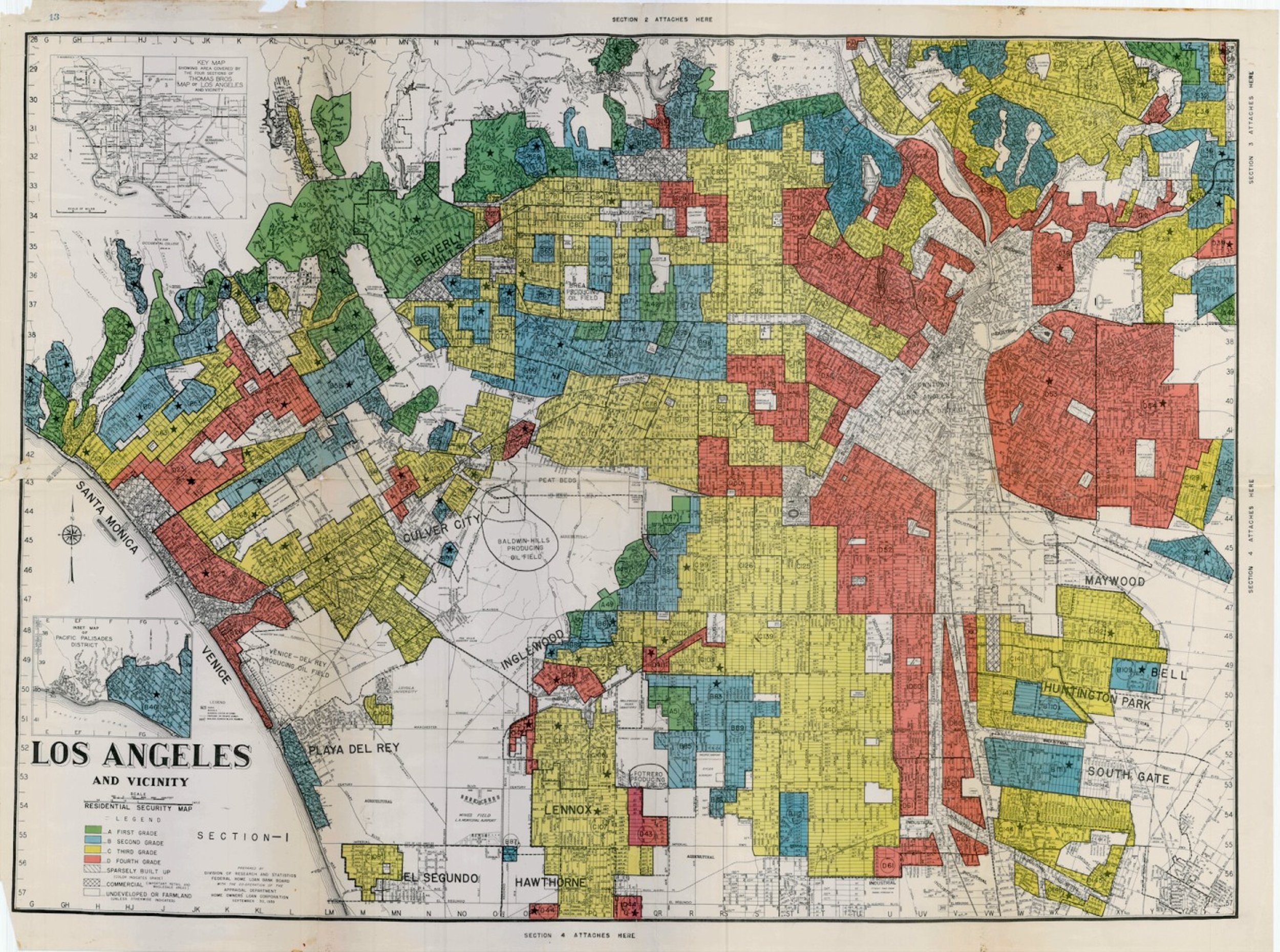Urban biodiversity
Los Angeles is one of the best cities on the globe to study urban ecology. We are lucky to be able to step outside our places of residence, our campus, and locations where we recreate to work in this amazing setting. We treat our urban research program in a way as Long-Term Ecological Research Stations do. We have sampling locations throughout the city that we regularly visit to address our questions. Below are the main projects we are focused on related to urban biodiversity.
redlining and urban avifauna
‘Redlining’ is a name that refers to a program devised in the 1930s by the Home Owner’s Loan Corporation (HOLC). The HOLC was a federal program developed with the intention to assist homeowners in default on their mortgages following the Great Depression. The HOLC also hand-drew security risk maps (the colored polygons in the image above) to evaluate mortgage lending risk. Areas in green and blue were locations where lending was deemed favorable, whereas, locations in yellow and red (where the term ‘redlining’ originates) were locations where lending was deemed hazardous. The program was inherently racist as locations were graded based on ‘Area Descriptions’, which were determined by the race or ethnicity of its inhabitants. The program has had a major effect on the development of most major cities in the US - often segregating communities, including green amenities. We are studying whether redlining is a potential explanatory pathway to the ecology and current distribution of avifauna in LA.
Residential yards and urban agriculture
We are interested in how land-use decisions within Los Angeles influence biodiversity. We focus our work in residential yards (see image above) and urban farms. Our questions are varied, yet mainly focus on how residents within cities can promote conditions that support biodiversity. Previous work in the lab has explored how native plants in residential yards benefit birds - which we are currently following up with insects. Future planned work will address similar questions regarding the role of native plants in attracting insect pollinators to urban agricultural systems.


